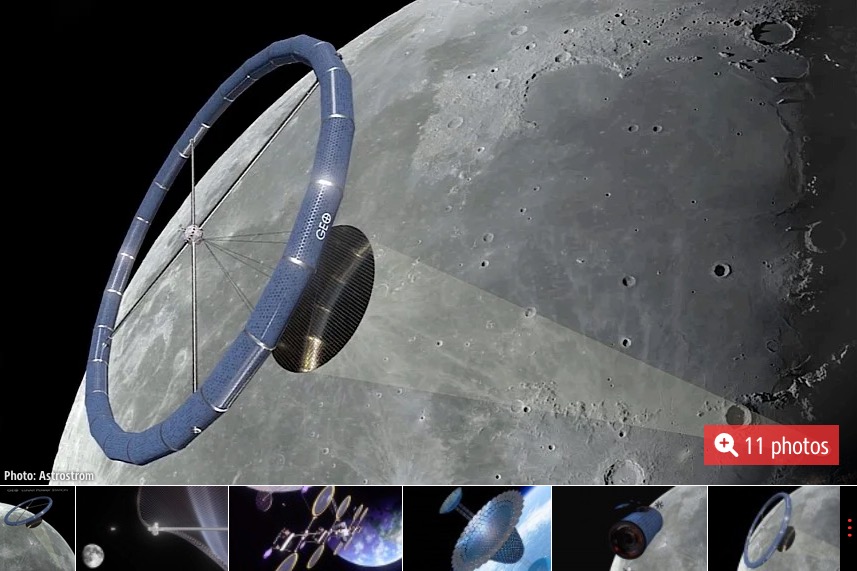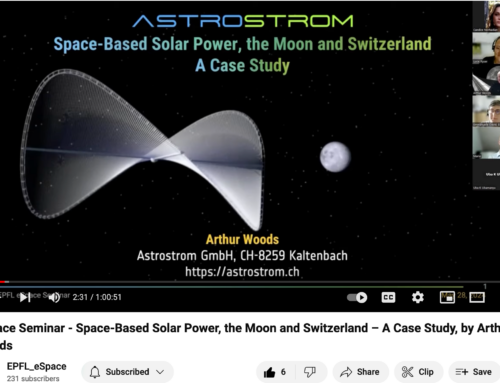With the Artemis Moon exploration program (almost) in full swing, companies, organizations, and individuals with an interest in space exploration are scrambling to find the best ways and tools to kickstart a lunar civilization. Because, unlike Apollo, Artemis is taking us to the Moon to make a second home of the place.
Published on autoevolution: 14 Jul 2023, 13:10 UTC • By: Daniel Patrascu
Link to article: https://bityl.co/Lmzf
While the primary goal of the Artemis program is, for now, to establish routine flights to Earth’s natural satellite and create a space station in orbit, secondary and long-term objectives target anything from in-situ resource utilization to comms and power distribution for lunar settlements.
Several ideas are on the table for each and every avenue of development currently being researched, but today we’ll focus a bit on power generation and distribution. That’s because without power we can’t have much of anything up there on the Moon.
This week’s idea in this field comes from the European Space Agency (ESA) and Switzerland-based space tech company Astrostrom. It’s centered around a tech called GEO-LPS, and plans to make full use of something called space-based solar power.
GEO-LPS stands for Greater Earth Lunar Power Station, and in essence we’re talking about a Moon-orbiting satellite meant to gather the Sun’s light and energy in space, and then beam it down in the form of microwave power to whoever needs it.
Unlike most other such designs, which are to be built on Earth and then shipped to lunar orbit, the GEO-LPS, including its solar panels, should be assembled on location, using raw materials available on the Moon.
The design should be capable of delivering some 23 megawatts of continuous power, which it collects using V-shaped solar panels. The panels come each with its own antenna, and are to be made using iron pyrite monograin-layer solar cells manufactured on the Moon.
For that large amount of power to be generated the size of the imagined array of solar panels should be huge. Depending on needs (the design is scalable) they could be deployed in a helix pattern extending more than one square kilometer (0.4 square miles).
The satellites should be placed at the Earth-Moon Lagrange point, which is rather far away from the Moon, at a distance of 61,350 km (38,121 miles) from the lunar surface.
Astrostrom goes even further and imagines the satellites not only as simple… satellites, but a modular space station of sorts that could very well be inhabited. In doing so, the place could also turn into a midway station for ships making the trip from the Earth to the Moon and back.
Although the exact design is far from complete, the people behind it imagine the station as one complete with artificial gravity. This type of construction would allow astronauts to catch a break from zero or low gravity, but would also turn the location into a popular tourist attraction for people wealthy and daring enough to take a vacation in space.
At the time of writing the GEO-LPS satellites/space station are only a study, but ESA is seriously considering it. The idea is part of the agency’s Open Space Innovation Platform Campaign, but also its SOLARIS initiative.
SOLARIS is specifically dedicated to advancing the idea of using space-based satellites to capture the Sun’s energy and beam it not to the Moon, but to Earth. Needless to say, if GEO-LPS proves it can work for lunar needs, it would most definitely work for more terrestrial purposes as well.

GEO-LPS with docked Lunar Lander
It will also solve the problem of having to launch large numbers of gigawatt-scale solar power satellites from our planet, an endeavor that could be prohibitively expensive and hard to accomplish.
Because of the Moon’s much lower gravity and its lack of an atmosphere, it would be a lot easier to send things into space from there – ESA says they will need “around five times less velocity change to place them into geostationary Earth orbit compared to satellites launched from Earth itself.”
Perhaps the trickiest part of all this is the manufacturing process of the satellites on the Moon, using local resources. For that to happen, a lot of infrastructure would have to be in place, including for mining, processing, transporting, and manufacturing the satellites and their parts.
Even so, the SOLARIS team looking at the GEO-LPS concept says they’ve found the satellites could be made “without requiring any technological breakthroughs.” What that means is that we already have the tech we need, we just have to find the best ways to use it for this purpose and in the all-so-different conditions on the Moon.
The GEO-LPS team goes as far as saying we might not even need humans on the Moon to conduct all the work, as all the hardware needed for the space station could be “delivered in modular form and managed telerobotically on the Moon’s surface.”
That could result in significantly cheaper satellites than what we’re able to produce here on our home planet. More importantly though, the energy they’ll beam down will also be a lot less expensive.
It’s not clear at this point when and if the GEO-LPS will move into a more physical state of development. ESA’s SOLARIS program has until 2025 to gather all the needed data to clear or bury the idea of energy beamed down from space to both Earth and Moon.






